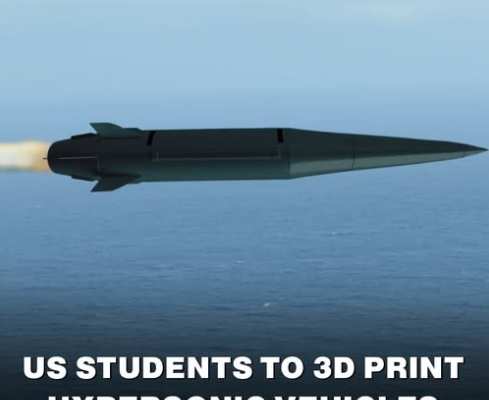US students to 3D print hypersonic vehicles with Mach 5 speed for military might
The research group is planning to consolidate metallic powders into novel alloys using an advanced powder atomizer and multiple types of metal 3D printers housed in the Applied Research Building.
The U.S. Army has approved a fresh $3.1 million funding to make hypersonic vehicles faster and more affordable.
A team at the University of Arizona College of Engineering is exploring the use of multiple metallic alloys and additive manufacturing to enable fabrication of Mach-X – pronounced mock-ex – aerospace technologies as part of a federal governmental push.
The team, led by Sammy Tin, revealed that the Mach-X vehicles will travel at speeds faster than Mach 5, which is five times the speed of sound and the hypersonic threshold.
Strategic importance of hypersonic vehicles
“This important research partnership draws on the university’s deep experience and strategic investments in hypersonics and is tied to an area of strategic importance for the university: advancing leadership in space sciences, space technology and national security,” said Tomás Díaz de la Rubia, U of A senior vice president for research and innovation.
The two-year project is expected to bring the Army closer to deploying Mach-X vehicles.
The team will process two alloys and study their capacity to be shaped into the complex structures needed for ultrafast aircraft.
3D printing using compositional grading
Researchers revealed that the alloys will be joined via 3D printing using compositional grading, in which the concentration of one alloy on the outside of a component gradually reduces to give way to a second alloy layer beneath. These components can be engineered to withstand extreme heat and stress, and also rapidly dissipate heat and minimize localized hot spots.
The primary goal of the project is to develop a knowledge base for 3D printing protocols that clarifies the costs and tradeoffs associated with materials and processes. This data will move the technology forward and enable producers to create components in nontraditional shapes that are affordable and practical.
Tin and Andrew Wessman, an assistant professor of materials science and engineering, have teamed up on a number of hypersonic projects and jointly hold over a dozen patents in alloy development.
However, this is the first time the two are working in the university’s Applied Research Building. The building opened in April 2023, providing the infrastructure to keep the university at the forefront of technological manufacturing and space sciences, according to a press release by U of A College of Engineering.
Hypersonic systems –- which are capable of flying at speeds greater than five times the speed of sound (Mach 5) — provide a combination of speed, range, maneuverability, and altitude that enables highly survivable and rapid defeat of time-critical and heavily-defended targets.
Consolidate metallic powders into novel alloys
The research group is planning to consolidate metallic powders into novel alloys using an advanced powder atomizer and multiple types of metal 3D printers housed in the Applied Research Building. The team is also constructing a lab in the building to test the materials’ durability and strength at temperatures up to 2,200 degrees Fahrenheit.
“The Applied Research Building gives us the resources to complete all the necessary steps in one place,” said Wessman. “We can move quickly and form a comprehensive, end-to-end picture of what materials we can use, what processes work and what results we can achieve.”
Researchers believe that in time, the hypersonic materials and protocols developed for the Army will make their way to space travel and commercial aviation.
“All flight structures have a lot of similarities to their geometries. The technology translates to many commercial applications that have tremendous impact on modern society,” said Tin.



